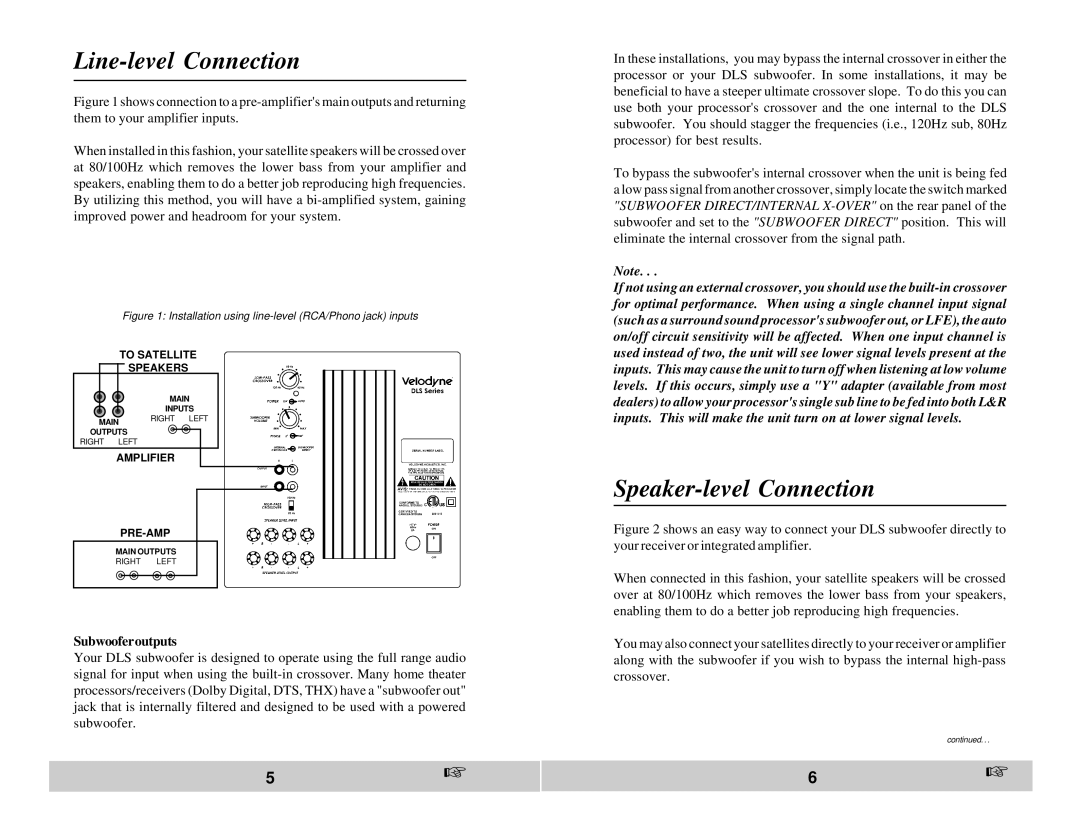DLS-3500, DLS-4000, DLS-3750 specifications
Velodyne Acoustics, renowned for its commitment to high-performance audio solutions, has developed a lineup of sophisticated subwoofers that stand out for their exceptional sound quality and innovative technologies. Among these models are the DLS-3750, DLS-4000, and DLS-3500, each designed to cater to different listening preferences while maintaining the brand’s hallmark of excellence.The DLS-3750 is engineered for those who desire robust bass in a compact package. This model features a 12-inch driver combined with a built-in amplifier that delivers an impressive 375 watts of continuous power and peaks up to 750 watts. One of the standout technologies in the DLS-3750 is its digital signal processing, which ensures precise control over the frequencies and optimizes performance to minimize distortion. The adjustable crossover and phase control further allow users to tailor the output to best suit their specific acoustical environment.
Moving up the lineup, the DLS-4000 provides an even more powerful option with a 12-inch driver and a peak power output that reaches 1000 watts. The DLS-4000 integrates the same advanced DSP technology as the 3750 but enhances it with an upgraded enclosure design that improves resonance control. This results in a richer bass experience with greater depth and clarity, making it ideal for both home theater enthusiasts and audiophiles who demand high fidelity in their sound reproduction. Its user-friendly interface allows for seamless integration with existing audio systems.
Lastly, the DLS-3500, with its 10-inch driver, is tailored for listeners who may have space constraints but still desire quality high-performance bass. Despite its smaller footprint, the DLS-3500 doesn’t compromise on power, delivering a peak performance of up to 700 watts. It features adjustable tuning options to help achieve an optimal sound tailored to the specific acoustic characteristics of any room. The DLS-3500 also utilizes advanced driver materials that deliver more accurate sound reproduction throughout the low-frequency range.
In summary, the Velodyne Acoustics DLS subwoofer series exemplifies cutting-edge design and engineering. With their powerful amplification, innovative DSP technology, and customizable sound features, the DLS-3750, DLS-4000, and DLS-3500 provide compelling options for consumers seeking to elevate their audio experience. Each model, while differing in specifications, shares the core values of performance and reliability that Velodyne is known for, making them exceptional choices for a variety of audio enthusiasts.

